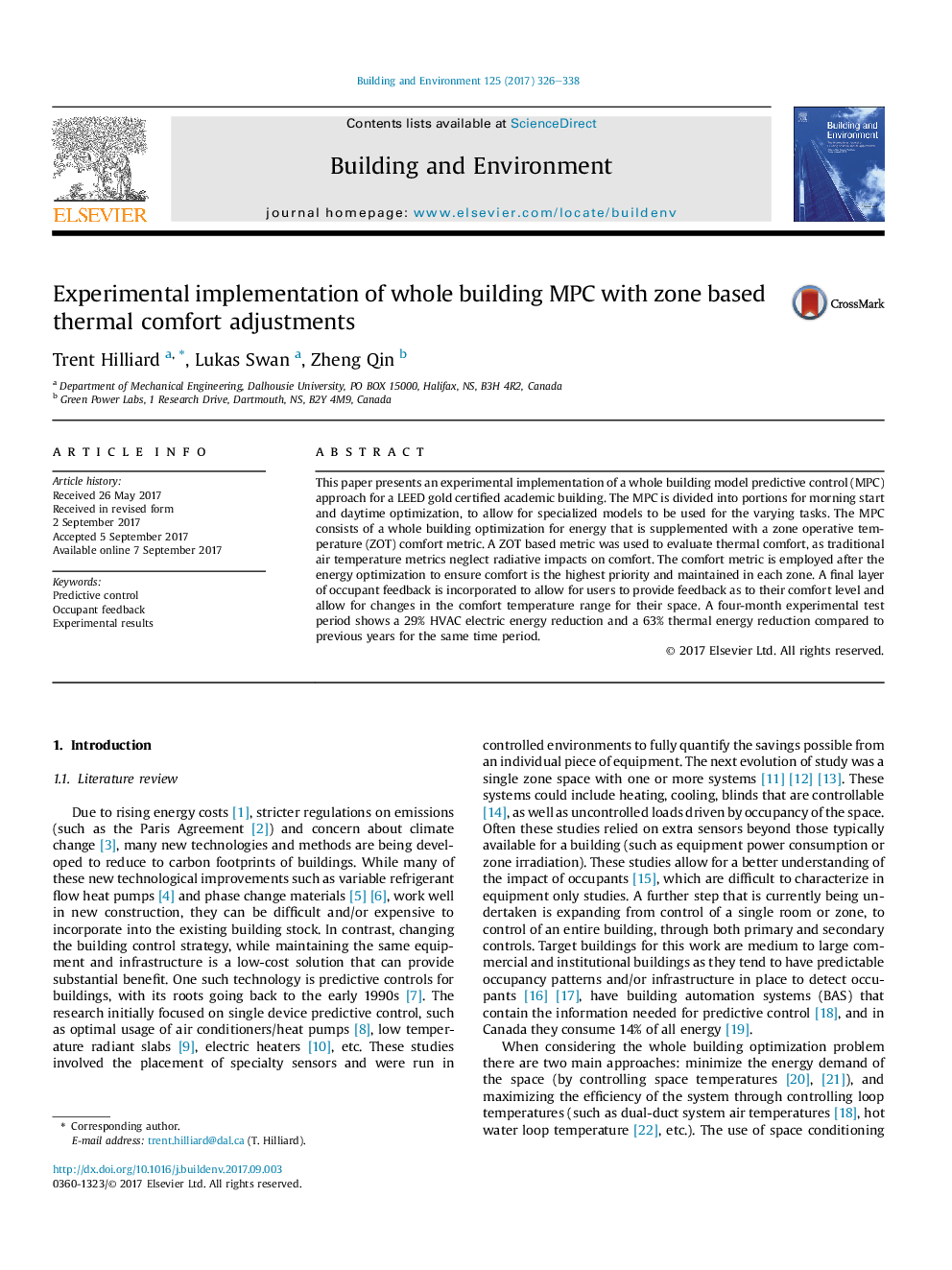| Article ID | Journal | Published Year | Pages | File Type |
|---|---|---|---|---|
| 6479234 | Building and Environment | 2017 | 13 Pages |
â¢A multi-model, multi-layer model predictive control scheme is presented.â¢Zone operative temperature as the comfort metric is used.â¢Surface level forecasts allow for local thermal comfort from building optimization.â¢Experimental results show 29% HVAC electricity savings.â¢Experimental results show 63% thermal energy savings.
This paper presents an experimental implementation of a whole building model predictive control (MPC) approach for a LEED gold certified academic building. The MPC is divided into portions for morning start and daytime optimization, to allow for specialized models to be used for the varying tasks. The MPC consists of a whole building optimization for energy that is supplemented with a zone operative temperature (ZOT) comfort metric. A ZOT based metric was used to evaluate thermal comfort, as traditional air temperature metrics neglect radiative impacts on comfort. The comfort metric is employed after the energy optimization to ensure comfort is the highest priority and maintained in each zone. A final layer of occupant feedback is incorporated to allow for users to provide feedback as to their comfort level and allow for changes in the comfort temperature range for their space. A four-month experimental test period shows a 29% HVAC electric energy reduction and a 63% thermal energy reduction compared to previous years for the same time period.
